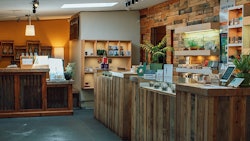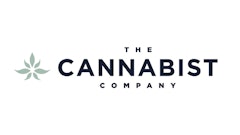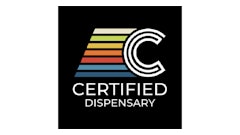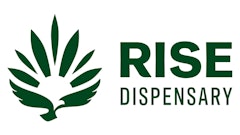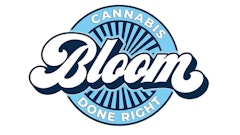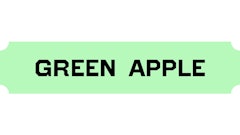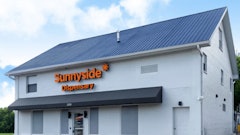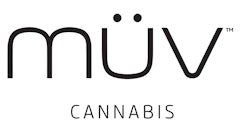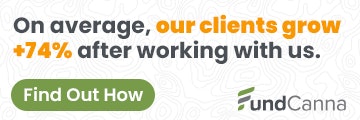
Cannabis market research firm BDS Analytics has added Arizona’s blooming medical marijuana market to its GreenEdge sales tracking platform. This growing database pulls in sales information from dispensary partners on the ground and aggregates those numbers into broad market trends.
Greg Shoenfeld, vice president of operations for BDS Analytics, tells Cannabis Dispensary that Arizona was a natural next step for a company that was already tracking Colorado, Washington, Oregon and California.
“We fully intend to expand to all states in the country. Some of those moves early on were pretty evident, based on the maturity of those markets,” he says. “As we start looking for new states, we're somewhat opportunistic based on the contacts and connections we have within those markets and how quickly we think we can build up our presence and capture the amount of data we need to accurately project sales in that market.”
With multi-state brands and market crossover appeal out west, Arizona and its 7 million residents and 162,000 cannabis patients made for an easy fit. (“It was probably neck-and-neck with Nevada, which will be soon to follow,” Shoenfeld says.)
BDS works on an opt-in framework with dispensary owners. It all begins with a conversation about the dispensary’s business and its point-of-sale system. From there, once a dispensary signs up, BDS works with the shop’s management to find out the hits and the misses in its business strategy.
Because cannabis markets operate in self-contained states, it’s vital to know how a dispensary is performing against its competition.
“What does their category mix or product mix look like in relation to the total market and how can they more effectively manage their category mix?” Shoenfeld asks, rhetorically, as an example.
Even before BDS landed in Arizona, the company was providing dispensary owners with visibility of sales in other markets. Owners could see similar trends and progressions, then apply filters of what they know about their business and their market. Now, BDS has 17 months of Arizona data to back up its business perspectives.
“We're trying to help them figure out: Where are they not doing as well as they potentially could be? And why is that?” Shoenfeld says. “By alerting them to those situations, it can really help them investigate what vendors might help them have a little bit better appeal to what the consumer is looking for.”
More and more, as states legalize and regulate cannabis, Shoenfeld says that BDS is noticing how the industry itself is driving the market—not necessarily public policy or regulations.
Thus, he adds, it’s important for dispensary staffers to know how to answer a fundamental question: “What brands are driving category trends?”
In Arizona, BDS is beginning to get a clear view of how the state’s medical cannabis market operates.
"The position of concentrates in Arizona has been really strong,” Shoenfeld says. With 33 percent of all Arizona cannabis sales coming from concentrates, this is a niche to watch. Within that 33 percent market share, vape sales hold 71 percent of concentrate sales. This is similar to what retailers are seeing in California; however, it’s divergent from trends in Colorado, where dabbable concentrates take the bulk of concentrate sales.
“By virtue of that,” Shoenfeld says, “flower is just … 49 percent of sales over that 17-month period. That's pretty much in line with the other states. What is interesting is that states are all kind of evolving at the same time. That might be a reflection of the state of the industry and the players in the industry and how they're approaching the business.”
And there’s the rub: Product category data and brand trends are a boon to the engaged dispensary owner.
“In 2014, flower's dominance in the market was much more significant,” Shoenfeld says. “Now, … these new states—as we're starting to see their data, even if they're medical-only markets—flower's position in the market is much diminished.”
Retailers who know their consumer trend history will be prepared to greet the future of the industry. BDS Analytics’ Industry Insights division, which publishes the State of Legal Marijuana Markets reports (in partnership with Arcview Market Research), works in tandem with the company’s GreenEdge data tracking division to provide clear-eyed projections for state cannabis markets.
It all comes down to the partnership between BDS and licensed dispensaries. “That's really all it takes: a willingness to share your data in a confidential fashion,” Shoenfeld says. “We don't specifically name what dispensaries are working with us. We do not sell their store-specific information. We only use it in aggregate to produce our total market reporting.”
Of course, then there are just basic truths about those markets than any operator should know and understand on Day 1. Edibles, for example, claim only about 10 percent of Arizona cannabis sales.
“Chocolates really do not sell well in Arizona,” Shoenfeld says. “That's one of those things: It makes sense. It's a product that just doesn't really hold up to the heat that well.”
Top photo courtesy of Adobe Stock










